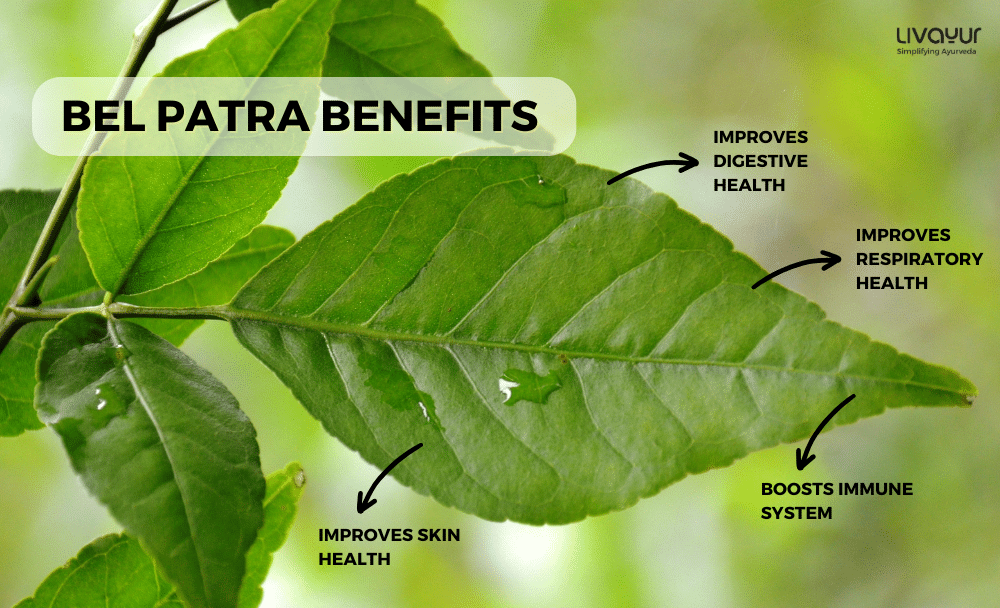
Ayurveda has long revered the therapeutic properties of various natural elements. Among these, bel patra, or the leaves of the Bael tree (Aegle marmelos), emerges as a multifaceted botanical treasure. Rooted in centuries-old Ayurvedic wisdom, Bel Patra offers many benefits beyond common knowledge. It’s well-known for its ability to treat various ailments like digestive issues, respiratory disorders, and skin problems. Bel Patra, also known as Bilva or Bael, has a rich history in Indian culture and spirituality, often associated with Lord Shiva. The plant, native to India, has been used for centuries in traditional medicine due to its potent therapeutic compounds. Its leaves, fruits, and roots are utilized in Ayurvedic formulations, highlighting its versatile healing properties in holistic healthcare practices. This article examines the ten remarkable Bel Patra benefits that might have eluded mainstream awareness. We will also focus on this sacred leaf’s contributions to your well-being.
Key facts about Bel Patra
- Bel Patra is often found growing alongside Hindu temples.
- Bel Patra’s medicinal properties have been mentioned in ancient texts like the Vedas, Puranas, Charaka Samhita, and Brihat Samhita.
- Bel Patra is rich in minerals, dietary fiber, and vitamin C.
What is Bel Patra?
Bel Patra, scientifically known as Aegle marmelos, is the most sacred and revered plant, often found growing alongside Hindu temples. It is a symbol of divine connection, mainly dedicated to Lord Shiva, with the belief that the deity resides beneath the sheltering branches of the Bael tree.
The sacred significance of this plant extends beyond religious rituals. Its medicinal properties are mentioned in ancient texts like the Vedas, Puranas, Charaka Samhita, and Brihat Samhita. Depicted in the historical paintings of Ajanta caves, every part of the bael plant offers therapeutic purposes, aligning with Ayurvedic principles. [1]
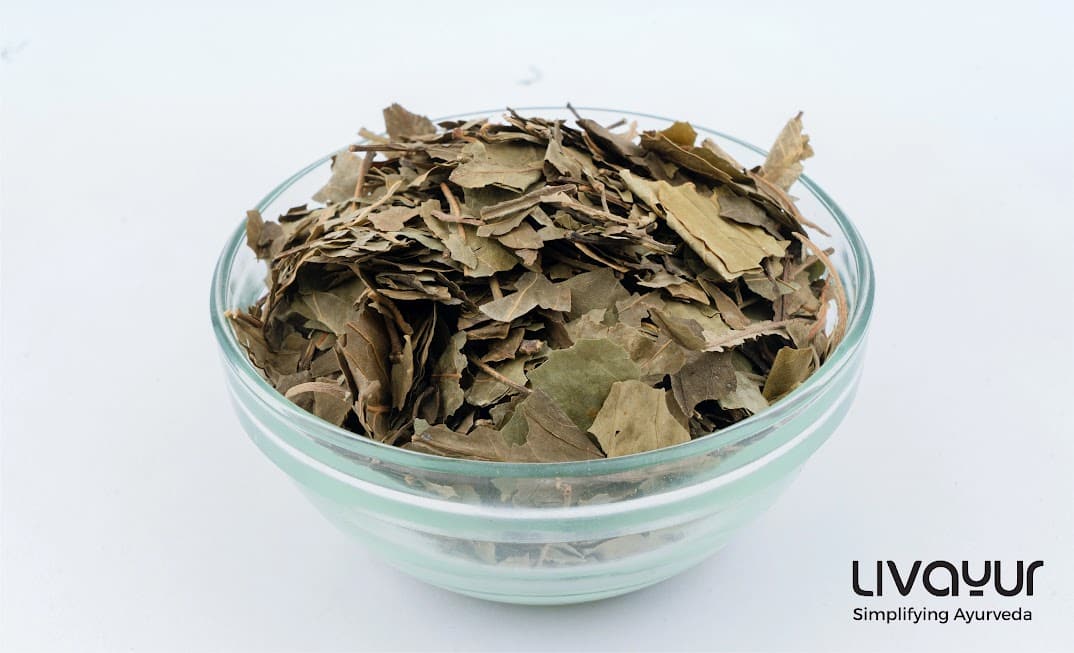
Nutritional value of the Bel Patra fruit
Here’s the nutritional value of 100 gm of the Bel Patra fruit. [2]
| Name | Amount |
| Carbohydrates | 31.80 g |
| Dietary fiber | 2.90 g |
| Minerals | 1.70 g |
| Fats | 0.39 g |
| Vitamin A | 0.05 mg |
| Vitamin B2 | 1.20 mg |
| Vitamin C | 8.0 mg |
Chemical structure of Bel Patra
Here’s the chemical structure of some major phytochemicals of Bel Patra.
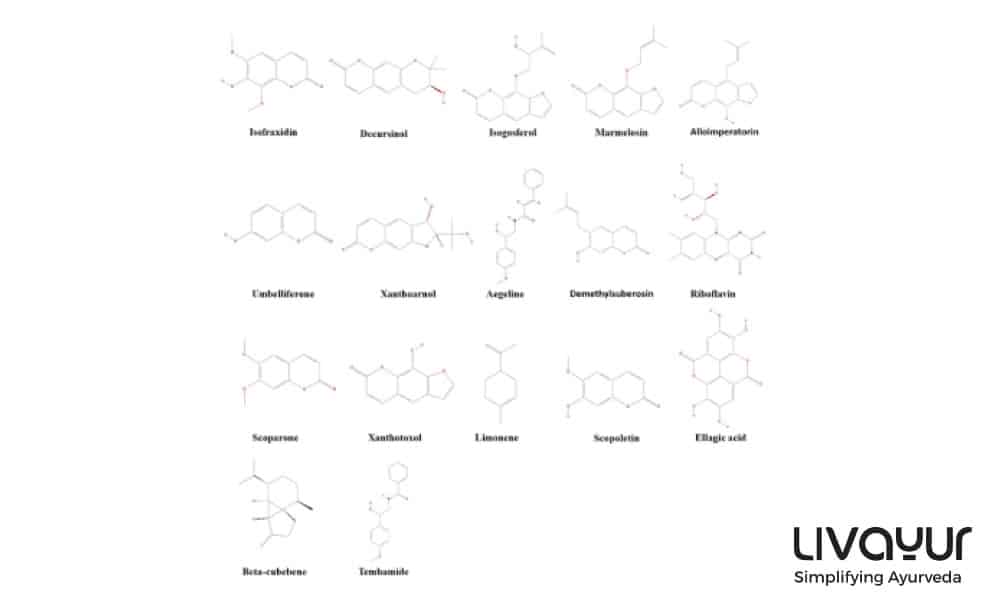
10 Incredible Benefits of Bel Patra
Here are the various Bel Patra benefits based on the principles of Ayurveda.
1. Dosha balancing
Bel Patra can balance the Kapha (water and earth) and Vata (space and air) doshas. It can promote equilibrium within the body’s elemental constitution. [2]
2. Medicinal use across systems
The fruit has medicinal applications in Ayurveda, Siddha, and Unani therapeutic systems. [2]
3. Diarrhea remedy
Bel Patra is an excellent remedy for diarrhea, owing to its astringent properties that effectively manage gastrointestinal distress. [2]
4. Properties of the leaf
The Bel Patra leaves carry expectorant, astringent, and febrifuge properties. They are valuable for treating bleeding disorders, edema, hemorrhoids, and bowel complaints. Additionally, bel patra leaves benefits for hair include promoting hair growth and reducing hair fall, making it a valuable ingredient in hair care.[2]
5. Roots in Ayurvedic formulations
The roots of the Bel Patra are a crucial ingredient in the preparation of ‘Dashamoola.’ It is a traditional remedy addressing dysentery, colitis, diarrhea, flatulence, loss of appetite, and fever. [2]
6. Chyavanprash ingredient
The fruits of the Bael tree contribute to producing Chyavanprash, a well-known Ayurvedic tonic with multifaceted health benefits. [2]
7. Unripe fruit tonic
In Ayurveda, the unripe fruit is a tonic for the heart and brain. It also finds use in the treatment of chronic diarrhea and dysentery. [2]
8. Bark and roots for urinary issues
The tree barks and roots of bel patra are known to alleviate urinary problems and heart palpitations. [2]
9. Digestive aid
The juice derived from bel patra aids in improving digestion, addressing scurvy, and strengthening stomach actions. [2]
10. Anti-diabetic properties
The Bael tree’s leaves, fruits, and bark possess anti-diabetic properties. [2]
What are the properties of Bel Patra
Here are the various beneficial properties of Bel Patra.
1. Edema treatment
The Shothahara quality of the plant’s leaves makes them valuable in treating edema and relieving swelling and fluid retention. [2]
2. Analgesic effect
Bel Patra is associated with Vedanasthapan, an analgesic property that reduces pain. [2]
3. Neurological support
The roots of the Bel Patra plant, known for Naaditantu properties, find use in treating neurological disorders and offer therapeutic support to the nervous system. [2]
4. Appetizing effect
The unripe fruit of the plant acts as a Deepan, or an appetizer, enhancing digestive processes and promoting a healthy appetite. [2]
5. Anti-helminthic action
Bel Patra exhibits Krimighna properties, indicating its effectiveness as an anti-helminthic agent to assist in the expulsion of intestinal parasites. [2]
6. Laxative quality
The ripe fruit, with Mridurechan properties, is a mild laxative, aiding in gentle and natural bowel movements. [2]
7. Metabolism enhancement
The leaf decoction of the plant, known for Yakritdutejak properties, contributes to an enhanced metabolism. [2]
8. Digestive stimulation
Pittasarak properties stimulate digestive juices and aid in the effective breakdown of food and absorption of nutrients. [2]
9. Cardio-protective agent
Bel Patra is recognized for its Hridya properties, acting as a cardio-protective agent to support heart health. [2]
10. Bleeding disorder remedy
Its Raktastambhak quality makes it valuable in treating bleeding disorders and regulating abnormal bleeding. [2]
11. Micturition aid
Bel Patra finds use in addressing Mutra-related issues to serve as a remedy for problems associated with micturition. [2]
12. Uterine health enhancement
The plant improves uterine health, particularly in conditions like Garbhashaya shotha. [2]
13. Antipyretic and chronic disorder treatment
Bel Patra’s Jwarghna properties make it effective in treating chronic disorders and acting as an antipyretic agent to reduce fever. [2]
14. Insomnia relief
Its Anidra properties make it beneficial in treating insomnia, promoting better sleep and overall mental well-being. [2]
15. Gastrointestinal disorder support
Bel Patra proves beneficial in treating Atisaar and Pravahika. It addresses diarrhea and dysentery disorders and offers relief in conditions like Grahni (irritable bowel syndrome). [2]
16. Abdominal pain relief
The plant’s Udarshool properties contribute to relieving abdominal pain and providing comfort in cases of discomfort in the abdominal region. [2]
17. Constipation alleviation
The ripe fruit’s Vibandh properties make it helpful in curing constipation for regular and smooth bowel movements. [2]
18. Ocular health
Bel patra’s Netrabhishyand properties, found in the leaf decoction or leaf paste, contribute to treating cataract diseases. [2]
How to consume Bel Patra
Bel Patra can be a part of your routine through the following consumption methods.
1. Fresh leaf consumption
Harvest fresh Bel Patra leaves and wash them thoroughly. Chew the leaves directly for a quick and natural intake of its therapeutic compounds.
2. Bel Patra juice
Extract the juice from the fresh leaves using a juicer or crushing them. Consume the juice as is or mix it with honey for added taste and nutritional benefits.
3. Bel patra tea
Prepare a herbal tea by steeping fresh or dried Bel Patra leaves in hot water. Strain the tea and drink it regularly to enjoy its soothing and medicinal properties.
4. Chyavanprash
Include bel patra as an ingredient in homemade Chyavanprash, a traditional Ayurvedic tonic. Consume a small spoonful daily for overall health and well-being.
Want to learn more about Chyavanprash? Read our related article on – Chyawanprash: The World’s Oldest and Most Effective Immunity Booster
5. Powdered form
Sun-dry the leaves and grind them into a fine powder. Mix the powder with honey or warm water and consume it for its concentrated benefits.
6. Bel Patra murabba
Prepare Bel Patra murabba by boiling the leaves with sugar and water until a thick syrup forms. Consume a small portion regularly to enjoy the sweet and medicinal properties.
7. Incorporate in recipes
Add fresh Bel Patra leaves to salads for a nutritional boost. Include the leaves in cooking, especially in traditional recipes or soups.
8. Unripe fruit tonic
Consume the unripe fruit directly or include it in smoothies for a tonic effect on the heart and brain.
9. Bel patra capsules or supplements
Opt for Bel Patra supplements in capsules or powders for a convenient and standardized dosage.
10. Infused water
Infuse water with fresh Bel patra leaves for a refreshing and mildly flavored drink. Allow the leaves to steep in water overnight for enhanced infusion.
What are the Side effects of Bel Patra
Here are some possible side effects of bel patra.
1. Allergic reactions
Some individuals may be allergic to components of bel patra. It can lead to itching, skin rash, or swelling. Monitor for signs of allergy when introducing Bel Patra into your diet.
Read our related blog on – 10 Best Home Remedies for Skin Allergies
2. Gastrointestinal distress
Excessive consumption of bel patra, especially in its raw form, may lead to gastrointestinal discomfort like bloating, gas, or indigestion. Moderation is vital to avoid these issues.
3. Laxative effect
The ripe fruit of bel patra has mild laxative properties. Excessive consumption may lead to diarrhea or loose stools. It’s crucial to consume it in moderation.
Precautions to keep in mind while consuming bel patra
Here are some precautions to keep in mind about Bel Patra.
1. Blood sugar levels
While Bel Patra traditionally helps manage diabetes, individuals on diabetes medication should exercise caution. The plant may interact with medications, potentially affecting blood sugar levels. Those with diabetes should consult a healthcare professional.
2. Blood pressure regulation
Bel Patra may have a mild hypotensive effect. Individuals with low blood pressure should be cautious about its consumption, which could further reduce blood pressure levels.
3. Pregnancy and lactation
Pregnant or lactating women should consult with their healthcare provider before consuming Bel Patra, as its effects during these periods are not extensively studied.
4. Drug interactions
Bel Patra may interact with certain medications. Individuals taking medications for blood pressure, diabetes, or other health conditions should seek advice from a healthcare professional to ensure no adverse interactions.
5. Anticoagulant properties
Bel Patra may have mild anticoagulant properties. Individuals on blood-thinning medications or with bleeding disorders should consult their healthcare provider.
6. Moderation in consumption
While Bel Patra is beneficial, excessive consumption can lead to adverse effects. Moderation is key, whether in the form of fresh leaves, juice, or supplements.
7. Quality and source
Ensure that Bel Patra products, especially supplements, come from reputable sources to ensure authenticity. Adulteration or contamination could pose health risks.
FAQs
1. Is Bel Patra good for health?
Yes, bel patra is considered beneficial for health. It offers several medicinal properties found in traditional systems like Ayurveda.
2. What are the Bel Patra leaves benefits?
Bel leaves are known for their diverse benefits. The various Bel Patra leaf benefits include managing digestive issues, promoting heart and brain health, and having anti-diabetic properties.
3. What are the benefits of the four leaves of Bel Patra?
The benefits of eating Bel Patra can contribute to its traditional medicinal properties, like balancing doshas, treating gastrointestinal issues, and offering mild laxative effects.
4. What are the side effects of Bel Patra juice?
While there are many benefits of eating Bel Patra and drinking it, excessive consumption may lead to gastrointestinal distress or allergic reactions in some individuals.
5. Who should not eat Bel?
Individuals with known allergies to Bel Patra or its components, those with low blood pressure, and pregnant or lactating women should exercise caution and consult with a healthcare professional.
6. Is Bel Patra safe to eat?
Yes, Bel Patra is generally safe to eat when consumed in moderation. However, individuals with specific health concerns should seek professional advice before regular consumption.
Conclusion
Bel patra’s lesser-known benefits reveal many therapeutic properties deeply rooted in Ayurvedic wisdom. Bel patra is a botanical treasure with multifaceted contributions to holistic well-being. The significance of bel patra extends far beyond its ceremonial and religious associations. In health and wellness, the nuanced benefits of this sacred leaf highlight the timeless relevance of Ayurveda. Remember to consume it in moderation and after consulting a healthcare professional to ensure the safety of your health.
Disclaimer
The information provided here is not intended to replace professional advice or treatment.

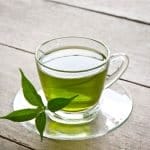

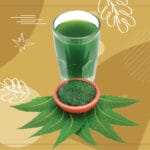
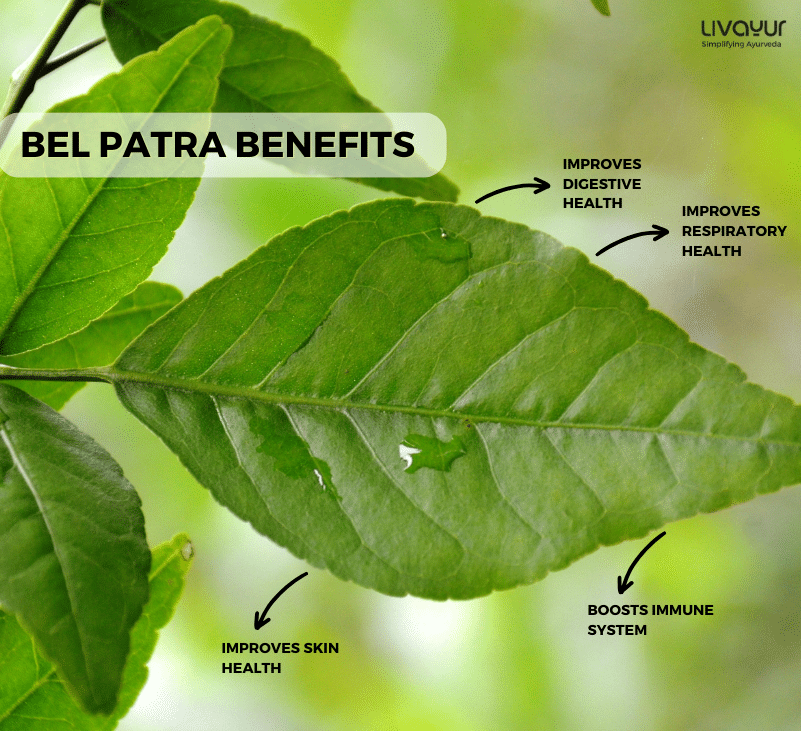









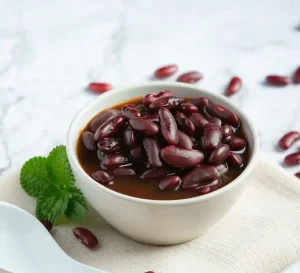

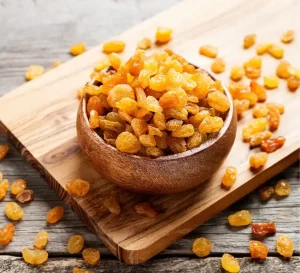
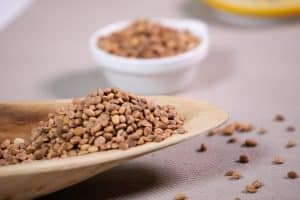







4 Comments